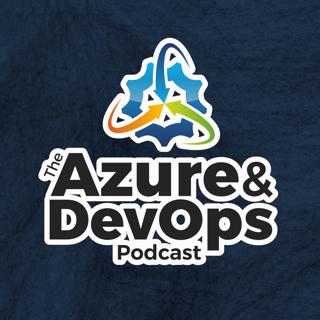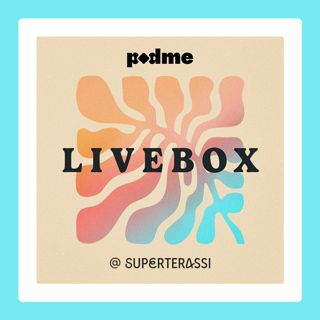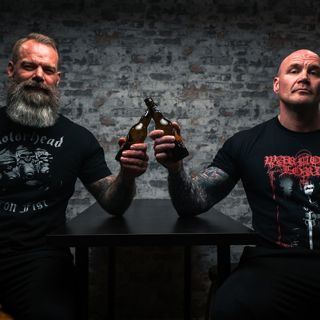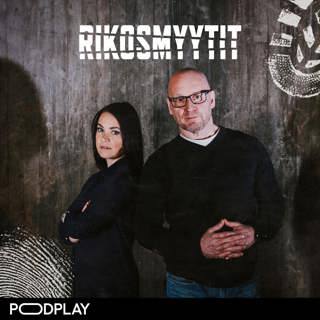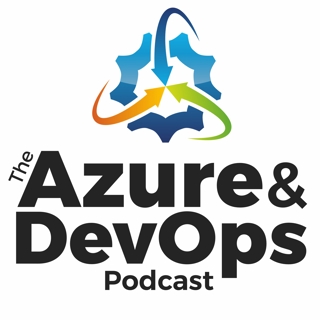
Rob Richardson on Database DevOps - Episode 131
This week Jeffrey is joined by another fantastic return guest — Rob Richardson! Rob is a software craftsman that is building web properties in ASP.NET, Node, Angular, and Vue. He’s a software developer, a community leader, a mentor, and the business owner of Richardson & Sons. Additionally, Rob is a Microsoft MVP; a published author; a frequent speaker at conferences, user groups, and community events; and a diligent teacher and student of high-quality software development. In today’s conversation, Jeffrey and Rob discuss database DevOps. Rob speaks about a user’s journey through an application, delivering value, holistically understanding the DevOps system, how to get set up properly with database DevOps, database manipulation, different database DevOps approaches, and more. This episode is jam-packed with tons of great information so be sure to not miss out! Topics of Discussion: [:38] Be sure to visit AzureDevOps.Show for past episodes and show notes. [:50] About The Azure DevOps Podcast, Clear Measure, and Jeffrey’s offer to speak at virtual user groups. [1:14] About Jeffrey’s newest podcast, Architect Tips! [1:20] About today’s episode with return guest, Rob Richardson. [1:33] Jeffrey welcomes Rob back to the podcast! [3:55] Rob shares his take on the state of DevOps today. [6:42] What is DevOps after-production comprised of? [7:30] Rob talks logging and monitoring when it comes to DevOps. [8:43] Rob shares about his journey as a developer in the space. [14:03] Rob shares insights on databases in DevOps environments. He also discusses a migration-based approach vs. a state-based approach vs. a hybrid approach. [21:00] A word from Azure DevOps Podcast’s sponsor: Clear Measure. [21:32] When it comes to each of these approaches (migration-based, state-based approach, and hybrid), does Rob find that he often builds a process himself or does he select tools to aid him in this process? [24:37] Rob and Jeffrey discuss database manipulation. [28:10] Rob highlights an incredibly useful feature: feature flags. [30:32] When it comes to the methodology of turning on and off code based on a table in a database, does Rob build that pattern himself or does he use any specific products? [32:57] Rob shares what he loves about database DevOps in particular. [33:27] Where to find Rob and his content online. [34:17] Jeffrey thanks Rob for joining the podcast! Mentioned in this Episode: Architect Tips — New video podcast! Azure DevOps Clear Measure (Sponsor) .NET DevOps for Azure: A Developer's Guide to DevOps Architecture the Right Way, by Jeffrey Palermo — Available on Amazon! bit.ly/dotnetdevopsebook — Click here to download the .NET DevOps for Azure ebook! Jeffrey Palermo’s Youtube Jeffrey Palermo’s Twitter — Follow to stay informed about future events! The Azure DevOps Podcast’s Twitter: @AzureDevOpsShow Rob Richardson’s Blog Rob’s Twitter: @Rob_Rich The Azure DevOps Podcast Ep. 34: “Rob Richardson on Containers in Azure” Rob’s upcoming presentations Trello Jira Node Angular Vue PythonReact SQL ServerRedGate SQL Source Control SQL Change Automation Entity Framework LaunchDarkly Want to Learn More? Visit AzureDevOps.Show for show notes and additional episodes.
8 Maalis 202135min

Mark Fussell on Dapr 1.0 - Episode 130
Joining Jeffrey today is return guest, Mark Fussell! Mark works on the Azure Incubations Team and is the Product Manager for Dapr, the Distributed Application Runtime. He has been working at Microsoft for over 19 years and has been a passionate advocate for building microservice-based applications for the last 10 years. He has a proven track record of building innovative computing platforms, running large-scale cloud services, and starting new million-dollar businesses within corporations. Last time Mark was on the show, he and Jeffrey discussed Dapr and what it can do for developers. In this episode, Mark and Jeffrey discuss the new 1.0 release of Dapr. Mark shares how to build, test, deploy, and monitor an application that’s built and deployed using Dapr. He speaks about the team’s journey for the last six months with working on the 1.0 release, the new and exciting changes with the 1.0 release, and all that Dapr is currently capable of. Topics of Discussion: [:38] Be sure to visit AzureDevOps.Show for past episodes and show notes. [:50] About The Azure DevOps Podcast, Clear Measure, and Jeffrey’s offer to speak at virtual user groups. [1:16] About Jeffrey’s newest podcast, Architect Tips! [1:20] About today’s episode with return guest, Mark Fussell. [1:42] Jeffrey welcomes Mark Fussell back to The Azure DevOps Podcast. [2:03] Mark gives a rundown of what’s new at Microsoft, how he ended up on the Azure Incubations Team at Microsoft, and what the team works on. [3:15] An overview of Dapr. [5:08] The huge news for Dapr: the new 1.0 release. [5:41] Mark elaborates on the journey for the last six months with Dapr and what’s new and exciting with the 1.0 release. [7:07] Is Dapr aimed squarely at processes such as backend services with no UI (that either need to be triggered by something or to pop up and do something)? [9:19] Is Dapr only for Javascript apps? Is it for .NET developers? How is it positioned? [11:55] The strategy of Azure and the positioning of Dapr. [13:25] What are some of Dapr’s main goals? Can Dapr be as simple as a single backend process to a whole bunch of backend processes? [21:53] A word from Azure DevOps Podcast’s sponsor: Clear Measure. [22:24] Is there overlap with Dapr and open-source distributed application frameworks for .NET such as MassTransit and NServiceBus? Did the Azure Incubations Team discuss these when developing Dapr? [24:19] Jeffrey and Mark dive into the operational side of Dapr. Mark speaks about how to build, test, deploy, and monitor an application that’s built and deployed using Dapr. [28:24] Does Dapr integrate with Application Insights on its own set of custom events and custom metrics? [29:28] What does deploying with ASP.NET look like? Is it possible, with Dapr, that you would not need to deploy a second process (whether it be Windows Service, Azure Function, or Containers) and you can simply bundle it in with a regular app service web application deployment? [33:51] Mark provides an update on the status of Kubernetes in Azure. [37:04] Discussing the future of running and deploying to Azure. Mentioned in this Episode: Architect Tips — New video podcast! Azure DevOps Clear Measure (Sponsor) .NET DevOps for Azure: A Developer's Guide to DevOps Architecture the Right Way, by Jeffrey Palermo — Available on Amazon! bit.ly/dotnetdevopsebook — Click here to download the .NET DevOps for Azure ebook! Jeffrey Palermo’s Youtube Jeffrey Palermo’s Twitter — Follow to stay informed about future events! The Azure DevOps Podcast’s Twitter: @AzureDevOpsShow Mark Fussell’s LinkedIn Mark Fussell’s Twitter @MFussell Dapr Dapr on GitHubrDapr for .NET Developers, by Robert Vettor, Sander Molenkamp, and Edwin van Wijk Azure DevOps Podcast Ep. 66: “Mark Fussell on the Distributed Application Runtime or Dapr” KEDA Azure Queue Storage Azure Service Bus MassTransit NService Bus Azure DevOps Podcast Ep. 128: “Simon Timms on Microservices Architecture” Azure Application Insights OpenTelemetry Collector ASP.NET Kubernetes Azure DevOps Podcast Ep. 110: “Stefan Schackow on What’s New in Azure App Service” “Microsoft’s Dapr Introduces Cloud Native Development to the Enterprise” | The New Stack “Microsoft's most useful open-source project for Kubernetes, Dapr hits the 1.0 primetime” | The Register “Distributed Application Runtime (Dapr) v1.0 Announced” | InfoQ “Microsoft’s Dapr open-source project to help developers build cloud-native apps hits 1.0” | TechCrunch “Microsoft’s open source Dapr hits prime time to help developers embrace microservices” | VentureBeat Want to Learn More? Visit AzureDevOps.Show for show notes and additional episodes.
1 Maalis 202141min

Harini Kannan on React Native - Episode 129
Joining Jeffrey today is Harini Kannan! Harini is a Program Manager in the Windows Developer Experiences and Platform team — a fast-moving and exciting team at Microsoft! Her team’s charter influences a lot of different technologies from WinUI to XAML to WPF to React Native for Windows, and more! Their team connects everything around enabling the Windows native UI stack to be the best, most powerful, and the most modern technology that people can target to build really solid apps for Windows. They’re always jumping on the latest technology and trying to give people the latest stuff with the best quality! Over the last two years, the team has been building an incredible, one-of-a-kind collaboration across many other teams within Microsoft, with the goal of bringing React Native to Windows. In their conversation together, Jeffrey and Harini dive into everything that her team does regarding React Native (as well as lots of other topics when it comes to rich and stateful native applications!) She shares how to build, deploy, and operate with React Native for Windows, the team’s journey of adapting React Native to work on Windows, and shares her recommendations on getting started. Topics of Discussion: [:38] Be sure to visit AzureDevOps.Show for past episodes and show notes. [1:00] About The Azure DevOps Podcast, Clear Measure, and Jeffrey’s offer to speak at virtual user groups. [1:20] Clear Measure is hiring! Be sure to check out the link in the show notes. [1:29] About Jeffrey’s newest podcast, Architect Tips! If you would like your question to be answered on Architect Tips, you can submit it at: ArchitectTips.ClearMeasure.com! [1:47] About today’s episode with Harini Kannan. [2:12] Jeffrey welcomes Harini to The Azure DevOps Podcast. [2:10] Harini gives a rundown of what she does within the Windows Developer Experiences and Platform team and what the team is currently focusing on. [4:18] Harini introduces herself, shares career highlights, and how she has arrived at Microsoft in her current role. [5:44] Over the last decade, the development technologies have fallen out of the forefront. Would Harini say that it is truly coming back? [7:58] What is React Native? [9:08] Harini shares about the team’s journey of adapting React Native to work on Windows. [9:47] Harini shares a public example of React Native apps for Windows. [11:19] When it comes to React Native, does it matter what you have on the server-side or what it calls out to? [11:32] What does the common integrated development environment (IDE) look like for React Native? What does the code structure look like when put in source control? [13:56] Is the general layout HTML and CSS? [15:07] For automated testing, do the Javascript testing libraries work? And for the things that are intertwined with those controls, where you have to have the application running, what is the applicable testing scenario? And what are the tools that work? How does this all play out in this application type? [16:31] Full system testing has been one of those things that still isn’t finished. Harini shares her comments and insights on this topic and where she sees the future of full system testing going. [18:35] A word from Azure DevOps Podcast’s sponsor: Clear Measure. [19:05] When packaging up a React Native application, is there anything special that one thinks about across Android, IoS, and Windows, when preparing that build for deployment into the app stores? [20:00] What does it mean to embed into a Windows Native app? What does that look like? [22:21] How much of React Native is Javascript or Typescript translated to Javascript? [23:13] Are most of the apps that Harini has spoken about thus far, Typescript? [23:30] When does Harini recommend Typescript over Javascript? [24:25] What are some of the ways to get these apps on Windows computers? [25:05] What does the telemetry or the observability story look like for React Native? What might have special support in React Native from knowing what your users are doing?[26:45] How should people think about feature flags with React Native? [28:10] What’s next for React Native? [30:33] How React Native interacts with Xamarin. [31:55] Does Harini have any insider information on why some people choose another technology over React Native? [34:26] Harini recommends some go-to resources to learn more! [35:40] Jeffrey thanks Harini Kannan for joining the podcast! Mentioned in this Episode: Architect Tips — New video podcast! Azure DevOps Clear Measure (Sponsor) .NET DevOps for Azure: A Developer's Guide to DevOps Architecture the Right Way, by Jeffrey Palermo — Available on Amazon! bit.ly/dotnetdevopsebook — Click here to download the .NET DevOps for Azure ebook! Jeffrey Palermo’s Youtube Jeffrey Palermo’s Twitter — Follow to stay informed about future events! The Azure DevOps Podcast’s Twitter: @AzureDevOpsShowReact Native React Native Windows WinUI XAML WPF Silverlight Xbox Game Pass Visual Studio Code (VSCode) Yoga LayoutJest WinAppDriver Appium The Azure DevOps Podcast Ep.80: “Ryan Demopoulos on WinUI” Typescript XamarinReact Native at Microsoft on Twitter @ReactNativeMFST Want to Learn More? Visit AzureDevOps.Show for show notes and additional episodes.
22 Helmi 202136min

Simon Timms on Microservices Architecture — Episode 128
This week, Jeffrey is joined by return guest, Simon Timms, to discuss microservices architecture. Simon Timms is a long-time freelance Software Engineer, multi-time Microsoft MVP co-host of ASP.NET Monsters on Channel 9, and also runs the Function Junction Youtube channel. He considers himself a generalist with a history of working in a diverse range of industries. He’s personally interested in A.I., DevOps, and microservices; and is skilled in Software as a Service (SaaS), .NET Framework, Continuous Integration, C#, and JavaScript. He’s also written two books with Packt Publishing: Social Data Visualization with HTML5 and JavaScript and Mastering JavaScript Design Patterns. Two years ago when Simon was last on The Azure DevOps Podcast, he and Jeffrey discussed Azure Functions and Processes. In their conversation today, they’re focusing on all things microservice-related. Simon has done a lot of work in the space of microservices and has a lot of insight on best practices; when (and when not) to use it; how you run it in production; how to build, test, configure, and deploy; what a visual structure solution looks like for a microservice; how to make a decision if you’re looking at a software system; and much more. If you’ve been wanting to learn more about microservices architecture, this is a not-to-miss episode! Topics of Discussion: [:38] Be sure to visit AzureDevOps.Show for past episodes and show notes. [1:00] About The Azure DevOps Podcast, Clear Measure, and Jeffrey’s offer to speak at virtual user groups. [1:45] Clear Measure is hiring! Be sure to check out the link in the show notes. [1:55] About Jeffrey’s newest podcast, Architect Tips! [2:19] About today’s episode with Simon Timms. [2:51] Jeffrey welcomes Simon to The Azure DevOps Podcast. [3:38] About today’s discussion with Simon on microservices. [4:54] Microservices: what it is and how it is different from simply splitting up a system into multiple applications. [7:43] Does a microservice architecture have its own version control repository? [8:45] Does Simon tend to have a microservice in its own version control repository, or, does he tend to have many microservices in the same version control repository? [9:38] What are shared dependencies? What does that mean in the context of microservice architecture? [12:26] Key tenets to keep in mind if you’re going to use microservices. [15:09] How to identify if utilizing microservices is the right (or wrong) architecture pattern for what it is that you’re doing. [19:53] A word from Azure DevOps Podcast’s sponsor: Clear Measure. [20:26] What is and isn’t considered a microservice? [25:02] What would cause you to choose one protocol/type of web service/messaging queue over another? [27:40] If Simon was to start a project today, would he say that there is a go-to way to do asynchronous queue-based messaging? [31:35] For someone new to the space of microservices, would Simon recommend NServiceBus as a good start? [33:57] With each different version, do control repositories have their own DevOps pipeline? [34:55] Is there a product or a method that works great when you have half a dozen independent programs running? [38:18] Simon’s recommendations on further resources to check out to learn more. [40:12] Jeffrey thanks Simon for joining the podcast once again! Mentioned in this Episode: Architect Tips — New video podcast! Azure DevOps Clear Measure (Sponsor) .NET DevOps for Azure: A Developer's Guide to DevOps Architecture the Right Way, by Jeffrey Palermo — Available on Amazon! bit.ly/dotnetdevopsebook — Click here to download the .NET DevOps for Azure ebook! Jeffrey Palermo’s Youtube Jeffrey Palermo’s Twitter — Follow to stay informed about future events! The Azure DevOps Podcast’s Twitter: @AzureDevOpsShow Simon Timms (Blog) Social Data Visualization with HTML5 and JavaScript, by Simon Timms Mastering JavaScript Design Patterns, by Simons Timms Function Junction Youtube Channel ASP.NET Monsters The Azure DevOps Podcast Ep. 23: “Simon Timms on Azure Functions and Processes” NServiceBus Azure Application Insights Want to Learn More? Visit AzureDevOps.Show for show notes and additional episodes.
15 Helmi 202140min

Jeff Fritz on Blazor Webassembly Architecture - Episode 127
Jeff Fritz is joining the podcast today! This is his second guest appearance. He is an experienced developer, technical educator and PM on the .NET team at Microsoft. He founded The Live Coders team on Twitch, and regularly livestreams builds of websites and fun applications. You can follow Jeff for more .NET, .NET Core and Visual Studio content on Twitch and Twitter at @csharpfritz. In this episode, Jeff talks about what you’re missing out when it comes to Blazor web assembly and Blazor server side. Jeff has been getting a lot of skeptical comments lately on whether this .net application is ready for the real deal, and he shares his opinions for what it's most useful for. He also has a live project that you can check out and beta test! Listen in as Jeff talks deployment and the future of where this application is headed. Topics of Discussion: [:38] Be sure to visit AzureDevOps.Show for past episodes and show notes. [1:00] About The Azure DevOps Podcast, Clear Measure, and Jeffrey’s offer to speak at virtual user groups. [1:20] Clear Measure is hiring! Be sure to check out the link in the show notes. [1:30] About Jeffrey’s newest podcast, Architect Tips! [1:59] About today’s episode with return guest, Jeff Fritz! [2:35] Jeffrey welcomes Jeff back on to the podcast. [3:15] Jeff shares what he’s currently up to and why he’s currently obsessed with live streaming. [6:45] Both Jeffery and Jeff can’t wait to get back to live conferences when this is all over. [7:45] Jeff kid’s are currently doing online school and they’re missing the social interactions. [8:45] Is .Net Blazor really ready for primetime? [10:35] Nothing is an overnight success. Let’s give Blazor some breathing room to see how it matures. [11:20] Jeff shares some of the fun things he’s been doing with Blazor. P12:55] What’s the difference between the web assembly version vs. the server version, and when should you be using which? [14:40] What makes Blazor different from other .Net apps? [18:05] How do successfully connect and deploy this application? [24:00] A word from Azure DevOps Podcast’s sponsor: Clear Measure. [24:40] Do we need to be thinking about containers when it comes to Blazor? Jeff argues it’s even simpler than that. [27:05] Jeff breaks down the compatibility level of Blazor web assembly. [28:05] Blazor web assembly not compatible with your particular use case? You can convert it on server side for more flexibility. [29:35] Jeff shares some of the projects he’s currently working on. [33:05] Listener challenge! Test out Jeff’s project. [37:30] We have a whole generation of web developers that have grown up on ‘web for everything’. However, as an industry, we’re slowly going back to native client applications. [39:30] Jeffrey shares what excites him about Blazor the most. [41:25] Jeffrey thanks James for joining the podcast. Mentioned in this Episode: Architect Tips — New video podcast! Azure DevOps Clear Measure (Sponsor) .NET DevOps for Azure: A Developer's Guide to DevOps Architecture the Right Way, by Jeffrey Palermo — Available on Amazon! bit.ly/dotnetdevopsebook — Click here to download the .NET DevOps for Azure ebook! Jeffrey Palermo’s Youtube Jeffrey Palermo’s Twitter — Follow to stay informed about future events! The Azure DevOps Podcast’s Twitter: @AzureDevOpsShow Jeffreyfritz.com Kliptok.com Twitch: @csharpfritz Twitter: @csharpfritz Blazortrain.com Want to Learn More? Visit AzureDevOps.Show for show notes and additional episodes.
8 Helmi 202142min

James Avery on Optimizing the Engineering Team Structure - Episode 126
Joining the podcast once again is return guest, James Avery! James is the Founder and CEO of Kevel, previously known as Adzerk. Kevel is the next generation of publisher ad serving; offering the infrastructure APIs needed to quickly build custom ad platforms for sponsored listings, internal promotions, native ads, and more. It's built to be faster, easier to use, and more comprehensive than anything on the market today. James originally started Kevel back in 2010, FTPing files up to an IaaS VM, and now he has a whole team and receives 3 billion requests per day! In this episode, he shares the story of Kevel, his unique take on how to structure a software engineering organization, how to align the dev organization with the architecture, and how to scale a custom index with a large number of ads. Topics of Discussion: [:38] Be sure to visit AzureDevOps.Show for past episodes and show notes. [1:00] About The Azure DevOps Podcast, Clear Measure, and Jeffrey’s offer to speak at virtual user groups. [1:20] Clear Measure is hiring! Be sure to check out the link in the show notes. [1:30] About Jeffrey’s newest podcast, Architect Tips! [1:59] About today’s episode with return guest, James Avery! [2:30] Jeffrey welcomes James back on to the podcast. [2:42] James shares the story of his company, Kevel, and what they do. [5:21] Do they source the ads themselves at Kevel? What does the customer do on their own? [6:33] Micro-blogging (such as Twitter) killed long-form blogging. Does James think long-form blogging may make a comeback? [8:00] Jeffrey and James talk censorship. [10:35] Discussing different analogies for architecture. [13:17] James gives an overview of the technology stack that’s under the covers in Kevel. [14:42] In AWS, how does James reason around regions, disaster recovery, etc? [15:54] James touches on AWS’ past and current reliability. [17:29] How many running processes makes the whole system of Kevel work? [18:40] How many engineers are part of the Kevel team? [19:02] A word from Azure DevOps Podcast’s sponsor: Clear Measure. [19:35] James shares his unique take and philosophy on how to structure a software engineering organization. [26:48] James shares what the approach has been to test at various levels. [29:59] James shares some key lessons they learned from working in a high-scalability environment. [31:39] Kevel has a massive amount of data and has tons of indexing. How much is in memory versus them utilizing storage providers? [35:29] Jeffrey thanks James for joining the podcast. Mentioned in this Episode: Architect Tips — New video podcast! Azure DevOps Clear Measure (Sponsor) .NET DevOps for Azure: A Developer's Guide to DevOps Architecture the Right Way, by Jeffrey Palermo — Available on Amazon! bit.ly/dotnetdevopsebook — Click here to download the .NET DevOps for Azure ebook! Jeffrey Palermo’s Youtube Jeffrey Palermo’s Twitter — Follow to stay informed about future events! The Azure DevOps Podcast’s Twitter: @AzureDevOpsShow James Avery The Azure DevOps Podcast Ep. 51: “James Avery on Scaling to 3 Billion Requests Per Day” The Azure DevOps Podcast Ep. 124: “Charles Flatt on Learning as a Developer” INSPIRED: How to Create Tech Products Customers Love, by Marty Cagan Want to Learn More? Visit AzureDevOps.Show for show notes and additional episodes.
1 Helmi 202136min

Architectures for 2021 and Beyond - Episode 125
In this episode, your host Jeffrey Palermo is sharing his top list of the architectures you should be paying attention to in 2021 and beyond. The software development world is changing at a faster rate every year. As we look back, there are architectures, infrastructure, and patterns that have often turned out to be nothing more than fads or distractions in hindsight — resulting in lost productivity, dead ends, and broken promises. To avoid this in 2021, Jeffrey is reviewing a survey of modern architectures that are sure to have staying power in 2021 and beyond. Get ready to tune in and take some notes! Topics of Discussion: [:38] Be sure to visit AzureDevOps.Show for past episodes and show notes. [1:00] About The Azure DevOps Podcast, Clear Measure, and Jeffrey’s offer to speak at virtual user groups. [1:25] Clear Measure is hiring! Be sure to check out the link in the show notes. [1:37] About Jeffrey’s newest podcast, Architect Tips! [1:57] About today’s episode. [2:39] The different levels of architecture patterns and why it is important to know them. [4:46] At the infrastructure level, this is the pattern to pay attention to: serverless architecture. [8:03] At the system level, this is one of three patterns you should be paying attention to: domain-driven design. [10:48] Also at the system level, you should pay attention to: microservices. [12:35] Discussing the two different major architectures that distributed architectures generally come down to: event-driven and web services. [16:27] Jumping down to the application level, Jeffrey begins highlighting the four must-know architecture patterns to be paying attention to, starting with: MVC and MVVM. [19:48] A word from Azure DevOps Podcast’s sponsor: Clear Measure. [20:17] Next on the application level, Jeffrey highlights: onion architecture and layered architecture. [23:01] Next on the application level: CQRS vs. structured programming. [25:24] Last on the application level: onion DevOps architecture. [28:46] At the layer level, Jeffrey highlights several must-have patterns, starting with: the adapter pattern. [30:45] Next on the layer level: mediator and chain responsibility. [31:34] The overall family pattern that mediator and chain responsibility are a part of: hub-and-spoke. [34:10] Lastly on the layer level: observer. [36:21] For different design patterns you will want to know how to describe them and be able to create diagrams. Jeffrey recommends PlantUML for this. [37:56] At the code level, Jeffrey highlights: generic code patterns, functional programming style, and object-oriented logging. [38:38] Jeffrey closes out this week’s episode. Mentioned in this Episode: Architect Tips — New video podcast! Azure DevOps Clear Measure (Sponsor) .NET DevOps for Azure: A Developer's Guide to DevOps Architecture the Right Way, by Jeffrey Palermo — Available on Amazon! bit.ly/dotnetdevopsebook — Click here to download the .NET DevOps for Azure ebook! Jeffrey Palermo’s Youtube Jeffrey Palermo’s Twitter — Follow to stay informed about future events! The Azure DevOps Podcast’s Twitter: @AzureDevOpsShow Design Patterns: Elements of Reusable Object-Oriented Software, by Erich Gamma, Richard Helm, Ralph Johnson, and John Vlissides Domain-Driven Design: Tackling Complexity in the Heart of Software, by Eric Evans DevOps Environment Poster PDF PlantUML Want to Learn More? Visit AzureDevOps.Show for show notes and additional episodes.
25 Tammi 202139min

Charles Flatt on Learning as a Developer - Episode 124
Charles Flatt is joining the podcast today! He has been a software developer since 1994 and has helped over a dozen organizations succeed on over fifty projects, both small and large. Charles has an unusual breadth of business and personal experience from foodservice and retail to music, business management, hardware installation, and of course, software development. In this episode, Charles talks about his learning as a developer and some of his successes, big lessons, and key takeaways from the course of his career. He shares actionable advice for developers, teams, and organizations on how to improve; his favorite resources and books for further learning; the metrics that matter the most; and what he sees as being the key components of what makes a DevOps organization successful. Topics of Discussion: [:38] Be sure to visit AzureDevOps.Show for past episodes and show notes. [1:00] About The Azure DevOps Podcast, Clear Measure, and Jeffrey’s offer to speak at virtual user groups. [1:24] Clear Measure is hiring! Be sure to check out the link in the show notes. [1:34] About today’s guest, Charles Flatt! [1:57] Jeffrey welcomes Charles to the podcast. [2:34] Charles shares his career journey before software development and how he began his career in software. [6:49] Charles speaks about where he has worked and what he has been working on in the last decade. [11:48] Charles shares some of the big lessons and key takeaways from the course of working on over fifty projects in software development. [18:21] Charles and Jeffrey discuss their favorite books on DevOps and give their recommendations on what you should be reading as a developer today. [20:50] A word from Azure DevOps Podcast’s sponsor: Clear Measure. [21:22] What Charles sees as needing to change within an organization in order to become more successful. [23:01] Charles gives some actionable advice on how to begin improving as a developer, as a team, and as an organization. [28:06] Charles and Jeffrey discuss the metrics that matter the most. [29:18] Jeffrey and Charles discuss the importance of continuous integration and what it really means to do continuous integration. [32:32] Charles recommends some go-to resources to check out after today’s podcast! [34:33] Jeffrey thanks Charles for joining the podcast! Mentioned in this Episode: Azure DevOps Clear Measure (Sponsor) .NET DevOps for Azure: A Developer's Guide to DevOps Architecture the Right Way, by Jeffrey Palermo — Available on Amazon! bit.ly/dotnetdevopsebook — Click here to download the .NET DevOps for Azure ebook! Jeffrey Palermo’s Youtube Jeffrey Palermo’s Twitter — Follow to stay informed about future events! The Azure DevOps Podcast’s Twitter: @AzureDevOpsShow Charles Flatt’s LinkedIn Azure DevOps Podcast Ep. 33: “Rockford Lhotka on Software Architecture” Accelerate: The Science of Lean Software and DevOps: Building and Scaling High Performing Technology Organizations, by Nicole Forsgren PhD The Phoenix Project (A Novel About IT, DevOps, and Helping Your Business Win), by Gene Kim The DevOps Handbook: How to Create World-Class Agility, Reliability, and Security in Technology Organizations, by Gene Kim, Patrick Debois, John Willis, and Jez Humble Continuous Integration: Improving Software Quality and Reducing Risk, by Paul M. Duvall, Steve Matyas, and Andrew Glover Good Habits, Bad Habits: The Science of Making Positive Changes That Stick, by Wendy Wood Measure What Matters: How Google, Bono, and the Gates Foundation Rock the World with OKRs, by John Doerr Want to Learn More? Visit AzureDevOps.Show for show notes and additional episodes.
18 Tammi 202135min
